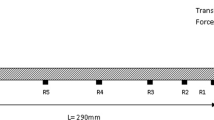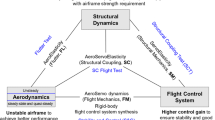Abstract
Structural tests are to gain confidence in the analytical predictions that support spacecraft development, and ultimately to support the qualification and flight acceptance of the spacecraft system. Based on envelopes of real-time launch vehicle data or simulation results, the input level of the vibration test is calculated with a certain safety margin. This conventional approach to vibration test may lead to over-testing problems, which will severely harm the spacecraft at resonance frequencies. To elaborate on the appropriate force input, Multiple DOF dynamic interface forces during the lift-off must be measured. The force sensor, which should be placed between the spacecraft and launch vehicle, is apparently not a good strategy, because it changes the connecting stiffness and strength of the interface between spacecraft and launch vehicle. Accordingly, a novel identification method for dynamic interaction force, based on the strain status of the spacecraft adapter ring, is proposed in the current study. Some special observation locations are selected along the surface of the adapter ring, on which strain rosettes are pasted to measure the local normal and shear strain. During the lift-off, the telemetry strain signal will be gathered to estimate Multiple DOF forces by theoretical analysis combined with ground test results. It is a promising method for future application.


















Similar content being viewed by others
Availability of Data and Materials
The datasets used and/or analyzed during the current study are available from the corresponding author on reasonable request.
References
Scharton TD (1995) Vibration-Test Force Limits Derived from Frequency-Shift Method. AIAA Journal of Spacecraft and Rockets 32(2):312–316
Scharton TD (1997) Force-limited vibration testing monograph [R]. NASA Reference Publication RP 1403, Jet Propulsion Laboratory, Pasadena, CA
Scharton TD (2012) Force-limited vibration testing [R]. NASA Technical Handbook, NASA-HDBK-7004C, Jet Propulsion Laboratory, Pasadena, CA
Jiachuan S, Jiazhi P et al (2021) Experimental study on interface force limit control technology. Environ Technol 39(06):136–142
Zheng-ju LI, Xingrui MA, Zengyao HAN (2011) Complex two-degree-of-freedom system method for force specification in force-limited vibration test. J Astronaut 32(1):1–6
Zhang Q, Lu Y, Bi JD et al (2019) An interface force monitoring and vibration control method based on the armature of shaking table and its engineering application. Spacecr Environ Eng 36(1):69–75
Shen J, Zeng X, Luo Y et al (2018) Research on strain measurements of core positions for the Chinese space station. Sensors 18(6):1834
Tessler A, Spangler J (2002) An inverse finite element method for application to structural health monitoring. In: 14th US National Congress of Theoretical and Applied Mechanics
Kefal A, Tabrizi IE, Yildiz M et al (2021) A smoothed iFEM approach for efficient shape-sensing applications: numerical and experimental validation on composite structures. Mech Syst Signal Process 152:107486
Kefal A, Tabrizi IE, Tansan M et al (2020) An experimental implementation of inverse finite element method for real-time shape and strain sensing of composite and sandwich structures. Compos Struct 258:113431
Funding
Not applicable.
Author information
Authors and Affiliations
Contributions
YZ and QZ contributed the central idea, analysed most of the data, and wrote the initial draft of the paper. The remaining authors contributed to refining the ideas, carrying out additional analyses and finalizing this paper.
Corresponding author
Ethics declarations
Conflict of Interest
The author(s) declared no potential conflicts of interest with respect to the research, authorship, and/or publication of this article.
Ethical approval
This article does not contain any studies with human participants or animals performed by any of the authors.
Informed consent
All participants provided informed consent prior to their participation.
Supplementary Information
Below is the link to the electronic supplementary material.
Rights and permissions
Springer Nature or its licensor (e.g. a society or other partner) holds exclusive rights to this article under a publishing agreement with the author(s) or other rightsholder(s); author self-archiving of the accepted manuscript version of this article is solely governed by the terms of such publishing agreement and applicable law.
About this article
Cite this article
Zhang, Y., Zeng, Q., Chen, X. et al. A New Identifying Strategy for 6-DOF Dynamic Interface Force Based on Strain Monitoring. Adv. Astronaut. Sci. Technol. 6, 35–45 (2023). https://doi.org/10.1007/s42423-023-00136-w
Received:
Revised:
Accepted:
Published:
Issue Date:
DOI: https://doi.org/10.1007/s42423-023-00136-w




